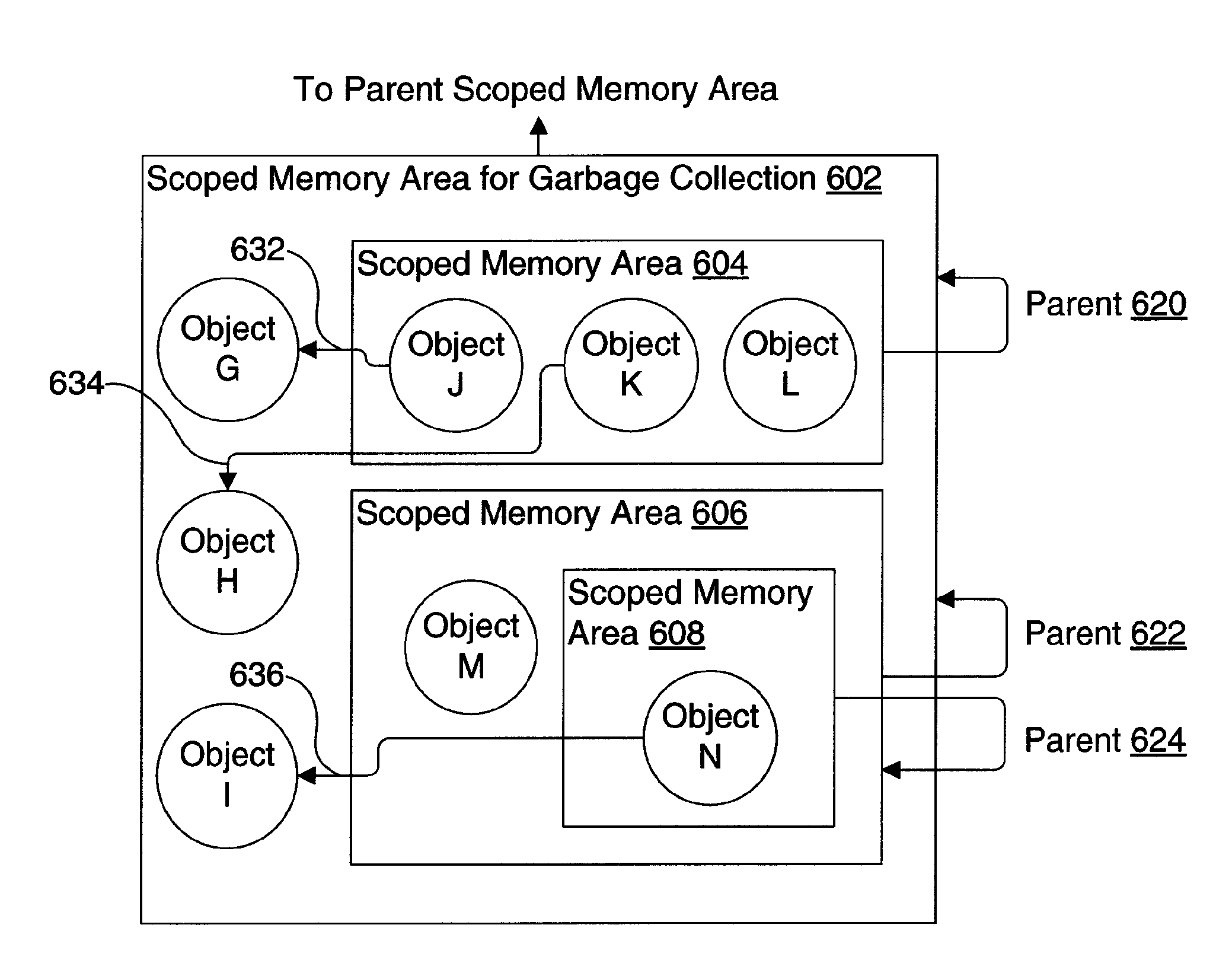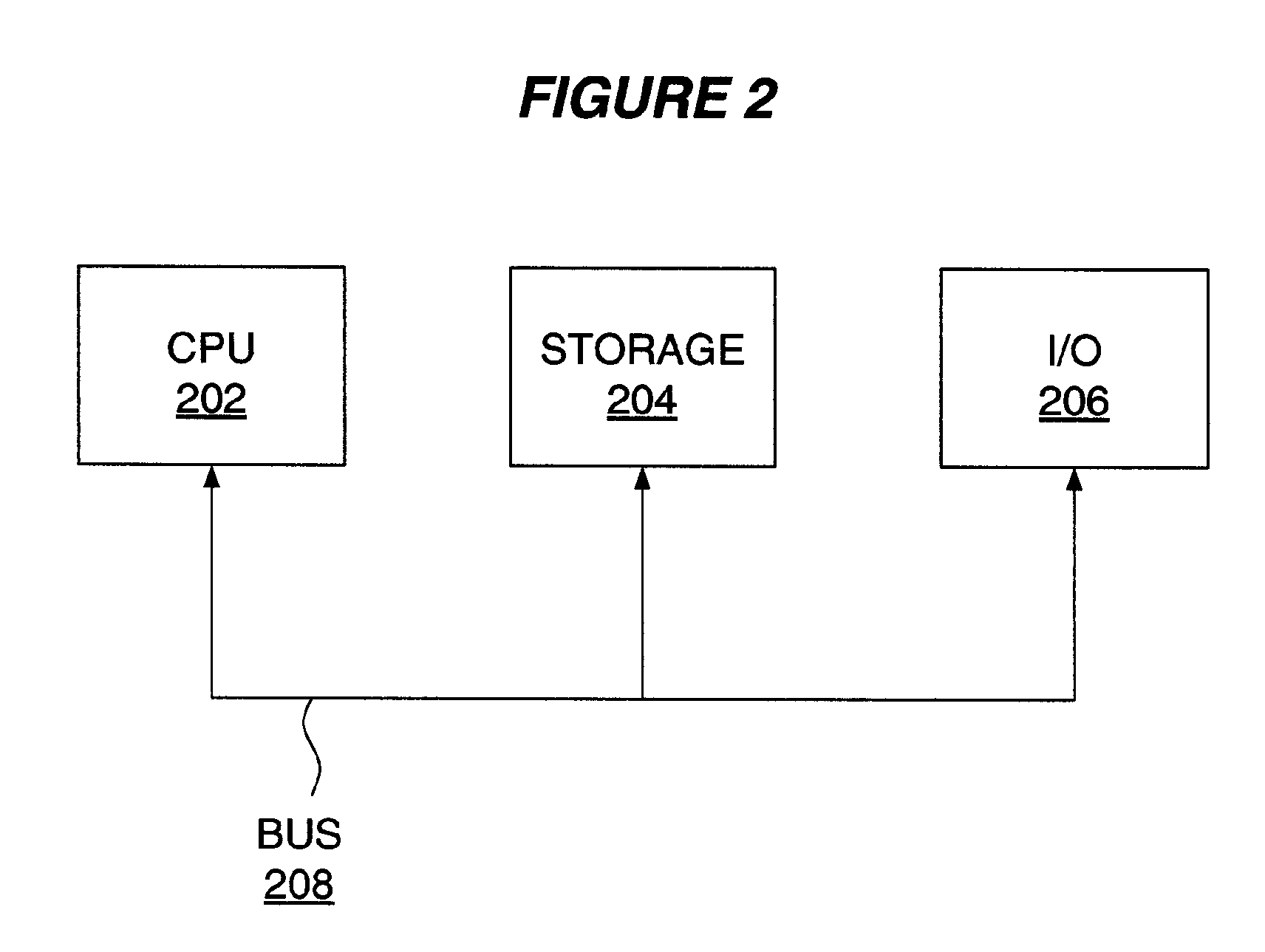Memory management using garbage collection of objects in child scoped memory areas
a memory area and object technology, applied in the field of memory management, can solve the problems of indeterminate frequency and duration of delays, garbage collection process generally requires suspension of software thread execution, and inability to identify and discard unused objects
- Summary
- Abstract
- Description
- Claims
- Application Information
AI Technical Summary
Problems solved by technology
Method used
Image
Examples
Embodiment Construction
[0028]FIG. 2 is a block diagram of a computer system suitable for the operation of embodiments of the present invention. A central processor unit (CPU) 202 is communicatively connected to a storage 204 and an input / output (I / O) interface 206 via a data bus 208. The storage 204 can be any read / write storage device such as a random access memory (RAM) or a non-volatile storage device. An example of a non-volatile storage device includes a disk or tape storage device. The I / O interface 206 is an interface to devices for the input or output of data, or for both input and output of data. Examples of I / O devices connectable to I / O interface 206 include a keyboard, a mouse, a display (such as a monitor) and a network connection.
[0029]FIG. 3 is an example block diagram of a software application in execution in a software runtime environment in accordance with one illustrative embodiment of the present invention. The software application includes threads of execution 302 to 308. Each thread ...
PUM
 Login to View More
Login to View More Abstract
Description
Claims
Application Information
 Login to View More
Login to View More - R&D
- Intellectual Property
- Life Sciences
- Materials
- Tech Scout
- Unparalleled Data Quality
- Higher Quality Content
- 60% Fewer Hallucinations
Browse by: Latest US Patents, China's latest patents, Technical Efficacy Thesaurus, Application Domain, Technology Topic, Popular Technical Reports.
© 2025 PatSnap. All rights reserved.Legal|Privacy policy|Modern Slavery Act Transparency Statement|Sitemap|About US| Contact US: help@patsnap.com



